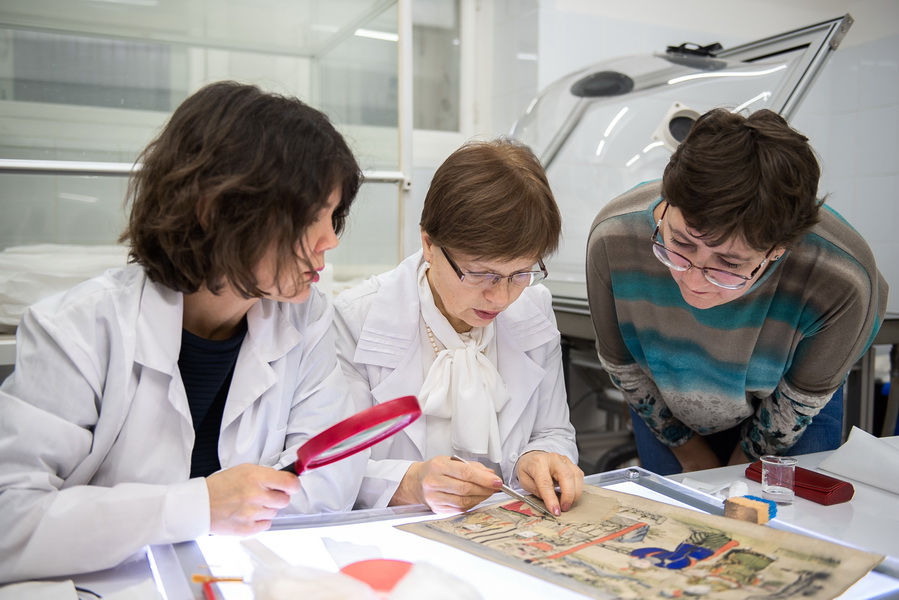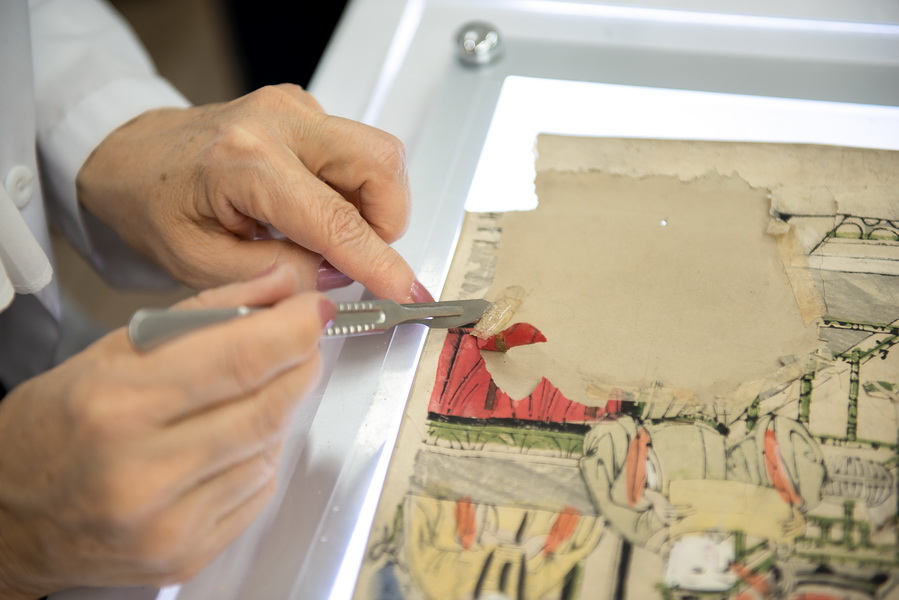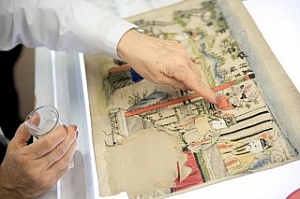Tomsk State University held a restoration examination of the Eastern collection of paintings, graphics, and the applied art of the late 19th – early 20th centuries, which is stored in the funds of the TSU Museum of Archeology and Ethnography. After the examination and training of TSU fine art restorers to work with oriental exhibits, it is planned to begin the restoration of a series of pictorial Chinese images made on rice-paper, and Japanese and Chinese engravings. All of these are exhibits from the first collection of the museum, collected for the opening of the university in 1888.
Elena Shishkova, the head of the Laboratory for the Scientific Restoration of Oriental Painting of the State Hermitage Museum, held the examination and scientific and practical seminars for the university fine art restorers. Oriental works of art are made according to a special technology that has been developed over the centuries, and it means that the approaches to the restoration of this painting are very specific. You need to know the ability of the hand of the material and the technique of manufacturing art monuments.

Elena Shishkova and the TSU staff have studied the Oriental Museum collection, which includes art objects from China, Japan, and Tibet. There are Buddhist icons that are made of glue paints on a canvas grounded on both sides, as well as scrolls, a fan, folk paintings, traditional engravings, and an album with engravings on rice paper.
- TSU keeps an album with a high-quality painting, very thin and elegant, - noted Elena Shishkova. But the problem with this material is that over time it loses its elasticity and becomes fragile and brittle. This causes a great loss of material because there are no fibers there, as in paper, it is natural cellulose.
The first samples of oriental art entered the university before 1888 thanks to the active public work of the TSU organizer Vasily Markovich Florinsky, who was also involved in the formation of the science and art funds of the future Imperial University. But even then many of the paintings were pasted on sheets of thick paper, most likely by the former owners of the paintings and scrolls for preservation. But this method of storage turned out to be destructive, for example, for fragile Chinese paper.
- Then there were careless fixes: most likely, the restorer did not own the technology and used the silicate glue. And it’s bad for documents, and especially for visual artifacts, - says Elena Shishkova. - The glue crystallizes over time and almost turns into glass. In addition, it is a very strong alkali, which simply eats away paper and dyes. Unfortunately, there are such gluings. And to remove them, a multistage restoration procedure is needed.
After the funds were evaluated and the first seminars conducted, a long-range plan for the restoration expertise and restoration work was drawn up. First of all, it is necessary to restore a series of pictorial Chinese images made on rice-paper, Japanese and Chinese engravings.
In the future, the State Hermitage Museum experts are ready to continue to act as consultants and partners of university fine art restorers in the restoration of works of art. TSU restorers also plan to attend internships at the Hermitage.


